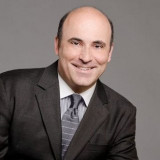The patent of the Tathams for an improvement upon the machinery
used for making pipes and tubes from lead or tin when in a set or
solid state explained and sustained.
Page 63 U. S. 133
This was a bill filed by the Tathams against the appellants for
an infringement of the patent for making lead pipe, which is
particularly described in a former case reported in
55 U. S. 14 How.
156.
The circuit court decreed that John Hanson and Charles Hanson,
of England, were the first and original inventors and discoverers
of the improvement in making pipes and tubes from metallic
substances, set forth and described in the bill of complaint.
That the subject matter of the said invention and discovery is
patentable.
That the complainants are the legal patentees and owners, within
the United States, of the said invention and discovery, set forth
in the bill of complaint, which sufficiently describes the
same.
That the defendants have infringed and violated the said patent
right of the complainants in the manner charged in the bill of
complaint.
The court thereupon ordered a reference to a master to take an
account of the damages sustained by the complainants. Upon the
coming in of his report, sundry exceptions were filed by the
defendants, which were overruled, and the court decreed the amount
which the defendants should pay. An appeal from this decree brought
the case up to this Court.
The facts of the case are stated in the opinion of the
Court.
Page 63 U. S. 134
MR. JUSTICE McLEAN delivered the opinion of the Court.
This is an appeal from the final decree of the Circuit Court of
the United States for the Southern District of New York, on a bill
filed by the appellees to restrain the infringement by the
appellants of a patent for making lead pipe, and for general
relief.
A suit at law was commenced, after the filing of the bill, on or
about the 10th of May, 1847, to recover damages for the same
infringement.
This action was twice tried -- once on the 3d May, 1848, and
resulted in a verdict for the appellants, which was set aside by
the court, and a new trial awarded. It was tried in May, 1849, when
the jury gave a verdict for the respondents for $11,394 in damages.
Exceptions were taken to the charge, and the judgment was reversed,
and a new trial ordered in December term, 1852.
55 U. S. 14 How.
156.
Before this decision was made, and in January, 1852, it was
stipulated between the counsel for the respective parties that the
testimony taken on the last trial in the action at law should be
read, and it forms the principal part of the evidence on both sides
in this suit.
The action at law was not to be tried again, but the suit in
equity was prosecuted in its stead.
The patent under which the plaintiffs claim bears date the 14th
March, 1846, and in their schedule they say:
"Our invention consists in certain improvements upon and
additions to the machinery used for manufacturing pipes and tubes
from lead or tin, or any alloy of soft metals, capable of being
forced, by great pressure, from out of a receiver, through or
between apertures, dies, and cores when in a set or solid state,
set forth in the specification of a patent granted to Thomas Burr
of Shrewsbury, in Shropshire, England, dated the 11th of April,
1820, recited in the Repertory of Arts &c., London &c."
The bill alleges that John and Charles Hanson, of England, were
the inventors of the improvements specified, on or prior
Page 63 U. S. 135
to the 31st of August, 1837; that on the 10th of January, 1840,
the Hansons assigned to H. B. & B. Tatham, two of the
defendants in error, the full and exclusive right to said
improvements; that on the 29th March, 1841, letters patent were
granted for the improvements to the Tathams, as the assignees of
the Hansons; that afterwards H. B. & B. Tatham assigned to G.
N. Tatham, the remaining defendant, an undivided third part of the
patent.
On the 14th March, 1846, the said letters patent were
surrendered, on the ground that the specifications of the
improvements claimed were defective, and a new patent was issued
which granted to the patentees, their heirs &c., for the term
of fourteen years from the 31st August, 1837, the exclusive right
to make and vend the improvements secured.
The defendants denied the infringement charged.
A great number of facts were proved showing the successful
manufacture of lead in the mode stated in the specifications, and
particularly that
"pipes thus made are found to possess great solidity and unusual
strength, and a fine uniformity of thickness and accuracy is
arrived at, such as, it is believed, has never been attained by any
other machinery."
And they say the essential difference in the character of this
pipe which distinguishes it as well as that contemplated by Thomas
Burr from all others heretofore known or attempted is that it is
wrought under heat, by pressure and constriction, from set metal,
and that it is not a casting formed in a mould.
"And it was proved that in all the modes of making lead pipe
previously known and in use, it could be made only in short pieces,
but that by this improved mode it could be made of any required
length and also of any size, and that the introduction of lead pipe
made in the mode described had superseded the use of that made by
any of the modes before in use, and that it was also furnished at a
less price."
And it was proved that lead, when recently become set and while
under heat and extreme pressure in a close vessel, would reunite
perfectly after a separation of its parts.
In the case of
Househill Company v. Neilson, Webster's
Patent Cases 683, it is said:
"A patent will be good, though
Page 63 U. S. 136
the subject of the patent consists in the discovery of a great,
general, and most comprehensive principle in science or law of
nature, if that principle is, by the specification, applied to any
special purpose, so as thereby to effectuate a practical result and
benefit not previously attained."
Mr. justice Clerk Hope, in his charge to the jury, said:
"The specification does not claim anything as to the form,
nature, shape, materials, numbers, or mathematical character, of
the vessel or vessels in which the air is to be heated, or as to
the mode of heating such vessels."
Now in this case it must not be forgotten that the machinery was
not claimed as a part of the invention, but the jury was instructed
to inquire
"whether the specification was not such as to enable workmen of
ordinary skill to make machinery or apparatus capable of producing
the effect set forth in said letters patent and specification,"
and that in order to ascertain whether the defendants had
infringed the patent, the jury should inquire whether they
"did, by themselves or others and in contravention of the
privileges conferred by the letters patent, use machinery or
apparatus substantially the same with the machinery or apparatus
described in the plaintiffs' specification, and to the effect set
forth in said letters and specification."
Now as no specification was claimed in regard to the machinery,
it is not perceived how the patent could be infringed unless upon
the principle that, having claimed no specific mode of applying the
heat, he could use any mode he might prefer, in defiance of the
rights of other patentees.
Now this cannot be law; certainly it is not law under the patent
act of this country. That act requires the making and
constructing
"the thing in such full, clear, and exact terms as to enable any
person, skilled in the art or science to which it appertains, to
make, construct, and use the same."
Alderson B. Webster's Patent Cases 342 says:
"The distinction between a patent for a principle and a patent
which can be supported is that you must have an embodiment of the
principle in some practical mode described in the specification of
carrying into actual effect; and then you take out
Page 63 U. S. 137
your patent not for the principle, but for the mode of carrying
the principle into effect."
"It is quite true that a patent cannot be taken out solely for
an abstract philosophical principle -- for instance, for any law of
nature or any property of matter, apart from any mode of turning it
to account. A mere discovery of such a principle is not an
invention, in the patent law sense of the term."
Web.Cases 683.
However brilliant the discovery of the new principle may be, to
make it useful, it must be applied to some practical purpose. Short
of this, no patent can be granted. And it would not seem to be a
work of much labor for a man of ingenuity to describe what he has
invented.
The
"newly discovered property in the metal and the practical
adaptation of it by these means to the production of a new result
-- namely the manufacture of wrought pipe out of solid lead"
was the discovery.
"There can be no patent for a principle; but for a principle so
far embodied and connected with corporeal substances as to be in a
condition to act and to produce effects in any trade, mystery, or
manual occupation, there may be a patent."
"It is not that the patentee conceived an abstract notion that
the consumption in fire engines may be lessened, but he discovered
a practical manner of doing it, and for that he has taken his
patent. This is a very different thing from taking a patent for a
principle."
The principle may be the new and valuable discovery, but the
practical application of it to some useful purpose is the test of
its value.
In the case of
Leroy v.
Tatham, 14 How. 136, it was said
"that in the view taken by the court in the construction of the
patent, it was not material whether the mere combination of
machinery referred to were similar to the combination used by the
Hansons, because the originality did not consist in the novelty in
the machinery, but in bringing a newly discovered principle into
practical application by which a useful article is produced, and
wrought pipe made, as distinguished from cast pipe. "
Page 63 U. S. 138
Now it must be observed that the machinery used was admitted to
be old, and any difference in form and strength must arise from the
mode of manufacturing the pipes. The new property in the metal
claimed to have been discovered by the patentees belongs to the
process of manufacture. The result is before us. We see the
manufactured article, and are told that its substance is greatly
modified and improved, but we derive little or no knowledge from
inspecting it. Except by the known process of its formation, we
cannot appreciate its value or comprehend the various purposes for
which it was made. We want to see and understand the processes by
which it was formed, the machinery in action, and a full
explanation of its parts.
The claimants say:
"We wish it to be understood that we do not confine ourselves to
the mode of operation herein described, by making the cylinder rise
with the hydraulic ram and other parts, and keeping the piston
stationary, as the same effects will take place when the cylinder
is stationary and the power of the ram is applied to the top of the
piston to cause it to descend into the cylinder, and our
improvements might be applied to a cylinder and press, fitted up in
other respects upon Burr's plans, whereby the pipe is received over
the top of the machinery &c., all which and other variations
will readily suggest themselves to any practical engineer, without
departing from the substantial originality of our invention."
"The combination of the following parts above described is
claimed, to-wit, the core and bridge, or guide piece, with the
cylinder, the piston, the chamber, and the die, when used to form
pipes of metal, under heat and pressure, in the manner set forth,
or in any other mode substantially the same."
To the above is added:
"We do not claim as our invention and improvement any of the
parts of the above-described machinery independently of their
arrangement and combination above set forth."
The machinery described in both the above sentences is only
claimed when used to form pipes of metal under heat and pressure.
And it must be admitted that the machinery described and
illustrated by the drawings is sufficiently explicit to show
Page 63 U. S. 139
the nature of the invention. If it be admitted that the
machinery, or a part of it, was not new when used to produce the
new product, still it was so combined and modified as to produce
new results within the patent law. One new and operative agency in
the production of the desired result would give novelty to the
entire combination.
The specifications are drawn with care and no ordinary skill,
and they cannot be misunderstood. No one can be supposed to mistake
the new product for the machinery through which it is developed.
And in regard to a practical application of the new conception, it
is as necessary as the conception itself; and they must unite in
the patent.
"The apparatus described is properly regarded by the patentees
as subordinate, and as important only as enabling them to give
practical effect to the newly discovered property, by which they
produce the new manufacture."
Certainly no comparison was instituted between the mechanical
contrivance used and the new discovery.
In the case of
Leroy v.
Tatham, 14 How. 176, the court instructed the jury,
"that the originality of the invention did not consist in the
novelty of the machinery, but in bringing a newly discovered
principle into practical use."
Principle is often applied to a machine to describe its
movements and effect, and we are told that the originality of this
invention did not "consist in the novelty of the machinery, but in
bringing a newly discovered principle into practical effect."
Whether the new manufacture was the result of frequent experiments
or of accident, it will be admitted that the process has been
demonstrated to the satisfaction of all observers, and this has
been done in the mode described.
In the complicated and powerful machinery used to produce this
result, it is not perceived why it should not be adverted to as
showing the most natural and satisfactory explanation of the
discovery. It is only necessary to examine the machinery combined
to see that its parts are dissimilar to others in use, and there
would seem to be no other reason for the use of the new principle
to the exclusion of the mechanical structures employed except a
higher reach of knowledge.
Page 63 U. S. 140
However this may be, it would seem that, when dealing with a
patentable subject, its appropriate name should be given to the
machinery by which it was developed. The admitted want of novelty
in the machinery, referred to so frequently, might invite
criticism, if it were necessary, to the case in 14th Howard, but
the case now before us is in chancery, and has been deliberately
considered.
Up to the year 1837, the date of Hanson's invention, two methods
only were known of making wrought pipe from lead in the set or
solid state, and these were the Burr method and the draw-bench
method. As soon as the plan of the Hansons was introduced, they
superseded all other methods.
Both of the above methods were defective -- the draw-bench on
account of the great labor, limited length of pipe produced, and
unequal thickness, and the Burr because of the difficulty of
holding the core central in the die in forming pipes of small
caliber.
The superiority of the Burr method for the general purposes of
manufacturing leaden pipes which require different sizes to be made
was so slight, as it seems, that for seventeen years after the date
of the Burr patent, not one of such machines was put in use in the
United States or in Europe.
In this combination of machinery there are six essential
parts:
First. A metal cylinder, capable of receiving the lead in a
fluid state, and permitting it to become set or solid therein, and
of great strength.
Second. A piston, which is a solid metallic body, fitted to the
bore of the cylinder, to work therein accurately, to prevent the
charge of lead from escaping around it, and so connected with a
hydraulic press or other motor of great power as to traverse the
length of the cylinder with a force applied of several tons, to
force out the charge of lead not in the liquid state.
Third. A die, which is simply a block of steel with a central
hole of a cylindrical form and of a diameter of the pipe to be
made.
Fourth. A core, which is simply a short cylindrical rod of steel
of the diameter of the caliber of the pipe to be made.
Page 63 U. S. 141
Fifth. A bridge or core-holder, which is a plate of metal with
apertures, having four or more arms radiating from the central
part, which has a central hole of the size of the core.
Sixth. A chamber of construction, located between the bridge and
the die, and extending from the one to the other, and either
conical or cylindrical, provided the end next the bridge be made of
greater diameter than the die.
It is rare that so clear and satisfactory an explanation is
given to the machinery which performs the important functions above
specified. We are satisfied that the patent is sustainable, and
that the complainants are entitled to the relief claimed by
them.
ORDER
The cause came on to be heard on the transcript of the record
from the Circuit Court of the United States for the Southern
District of New York, and was argued by counsel, on consideration
whereof it is the opinion of this Court that the complainants in
the court below are entitled to recover from the defendants the sum
of $16,815.57. Whereupon it is now here ordered, adjudged, and
decreed by this Court, that the same is hereby affirmed to the
extent of the aforesaid sum of $16,815.57, and that it be reversed
as to the residue, and that this cause be, and the same is hereby,
remanded to the said circuit court, with directions to enter a
decree for that amount in favor of the complainants. And it is
further ordered and decreed by this Court that the costs in the
court below be paid by respondents in that court, the appellants
here, and that each party pay his own costs in this Court.




